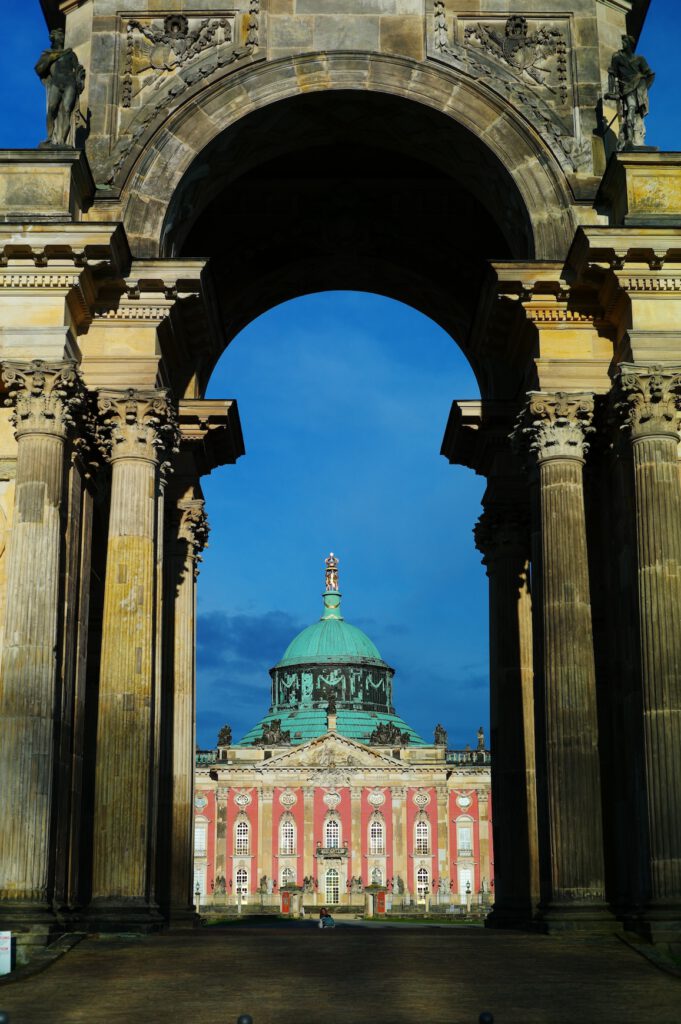Easter Van Tour 2024

Our journey started on the 25th of March 2024 and we returned on 04th of April 2024. We started in Upper Bavaria and our final destination was the island Rügen in Mecklenburg-Western Pomerania. On our trip we visited the cities of Donaustauf, Walhalla, Weiden i.d.Opf., Kulmbach, Potsdam, Sellin on Rügen, Prorar on Rügen, Binz on Rügen, Sassnitz on Rügen, Putbus on Rügen, Lauterbach on Rügen, Güstrow, Schwerin, Ludwigslust, Magdeburg and Plauen.
Below is a snap shot of what we found interesting, worth mentioning or visiting. The descriptions are by no means exhaustive. For more information there is mostly a local web page and a WIKI for almost everything and anything.
List of places visited
- Donaustauf
- Walhalla
- Kulmbach
- Potsdam
- Sellin-Rügen
- Prora-Rügen
- Binz-Rügen
- Sassnitz-Rügen
- Putbus-Rügen
- Lauterbach-Rügen
- Güstrow
- Schwerin
- Ludwigslust
- Magdeburg
- Plauen
Donaustauf
We started off in Donaustauf or Markt Donaustauf is a small city in Bavaria with a population of roughly 4.300. It is situated directly at the river Danube and about 5km from Regensburg. The name Donaustauf comes fron the river Donau=Danube and from Stouf=old German for mountain cone. On the same are the ruins from the castle which was destroyed by the Swedes 1634 in the Thirty Years’ War. One of the must see locations with a beautiful view on the Danube.

The other must see location is the Chinese tower. It was built 1842 from Fürst Maximilian Karl von Thurn und Taxis and was located in the castle garden. 1999 it was moved to place where it is situated today – on a small hill between city and Danube.

Donaustauf is famous for the near located Walhalla on the “Bräuberg”.
Walhalla
Walhalla was build by King Ludwig I. from Bavaria 1830 to 1842. It is the hall of fame for distinguished people in the German history represented by plagues or busts.
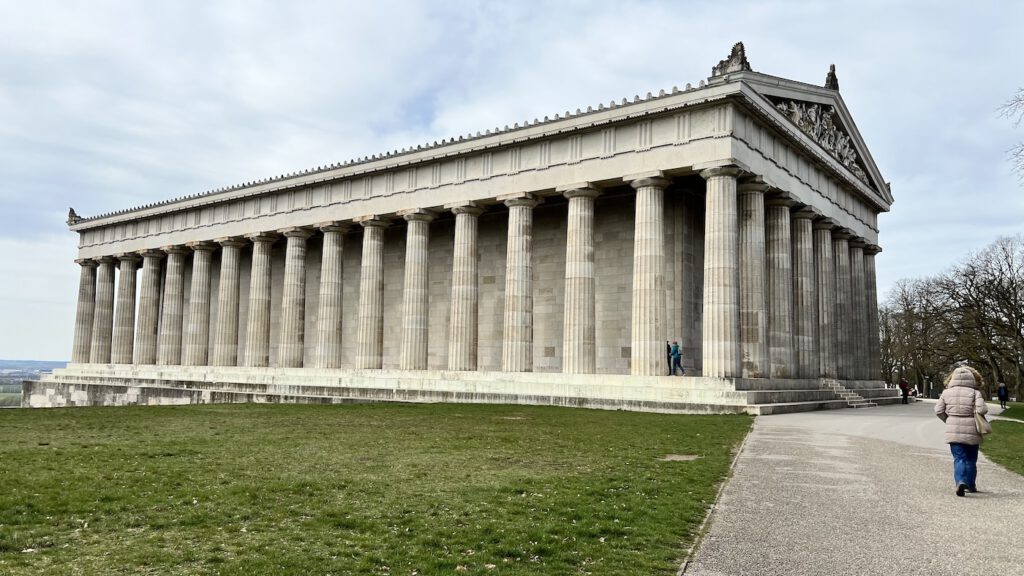
Today there are 132 busts and 65 plagues. Beside many well known people from Germany like Martin Luther, Albert Einstein and Sophie Scholl, there are also a few that go beyond the territorial boundaries like Erasmus from Rotterdam, Prince Maurits van Oranje and Wilhelm II van Oranje who was Prince of Oranje and King of England, Ireland and Scotland aka William II.
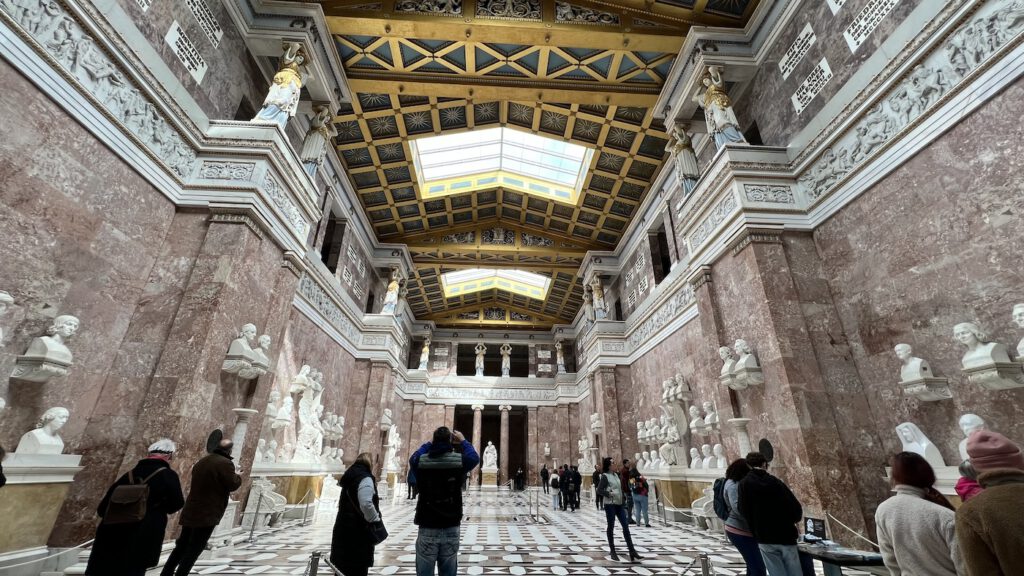
Kulmbach
In Upper Franconia, about 25km from Bayreuth (known for the Richard-Wagner music festival) lies Kulmbach known to be the home of beer. Well known is the „Erste Kulmbacher Actien-Exportbier Brauerei“ (EKU) – First stock listed export beer brewery which was founded in November 1872.
The Plassenburg welcomes you when entering Kulmbach on the B289 from the east.

The Plassenburg is a castle and was first mentioned 1135 under Count Berthold II. von Andechs. Over time the castle was ruled by Orlamündern, Hohenzollern and counts of Brandenburg. Like most castles, Plassenburg was destroyed 1554 and rebuild. In 1662, during the ThirtyYears’War, Wallenstein concurred Kulmbach.
Today the castle holds the landscape- and tin-figures museum and is a venue for cultural events.
The old part of Kulmbach is packed with an old and restored buildings and definitely worth a visit.
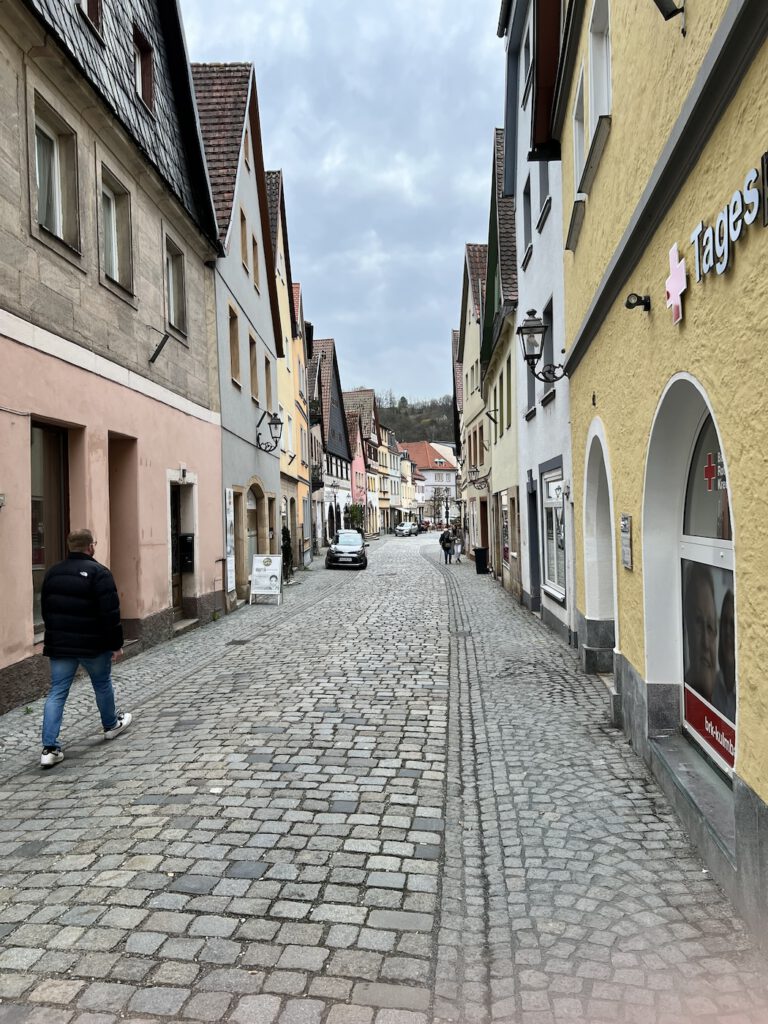


Last, but not least. For all beer enthusiasts (like me), there is a beer festival in Kulmbach. It starts every year on the last Saturday of July, for an entire week. Enough time to try the one or other Franconian beer and great food.
Potsdam
After a long a dull ride on the Autobahn our next stop was Potsdam which is the capital of the state Brandenburg and about 36 km (by car) east from the city of Berlin. With a population of 190.000, Potsdam is the largest city in Brandenburg. Until 1918, Potsdam was a residence of the Prussian kings and the German Emperor. Our focus was the castle Sanssoucci (from the French language sans soucci, without worries). Sanssoucci was build from 1745 to 1747 based on the plans from Frederik II or Frederik the Great (1712-1786).
The most famous building is the castle with the terrace vineyard.

The Sanssoucci park has a size of 300 hectare (3.000.000 sqm). Along the main walking route there are further interesting buildings like


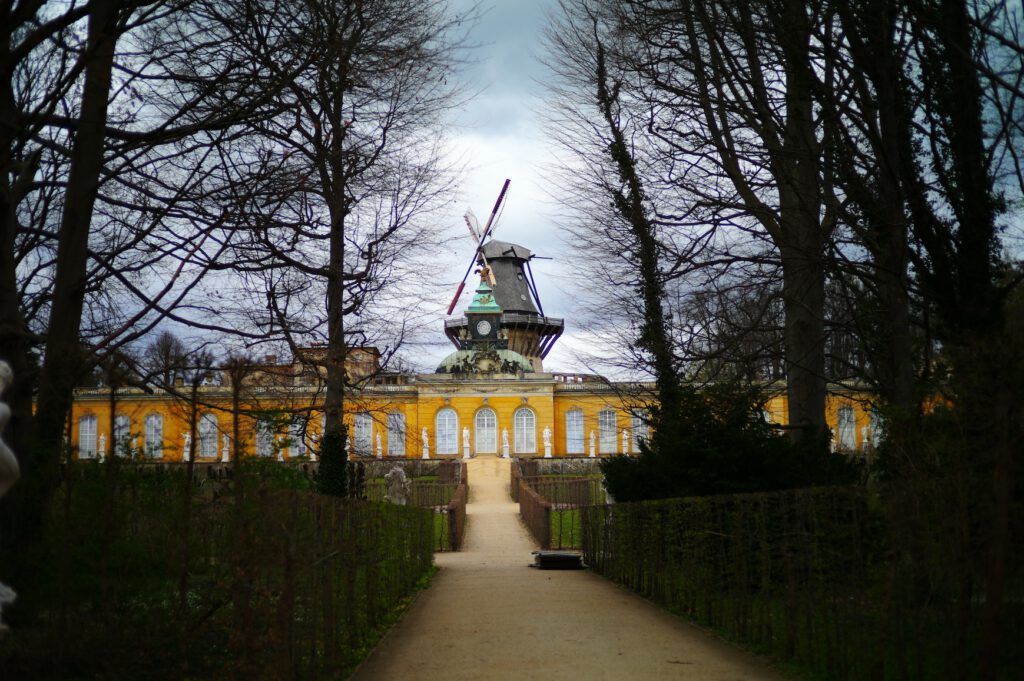
After roughly 2 km down the main walking path lies the New Palast. Build in Baroque still, it is in contrast to the rather modest Sanssoucci. It served official and representational needs. Although it has a the kings chambers, Frederick II rarely stayed in the Palast.
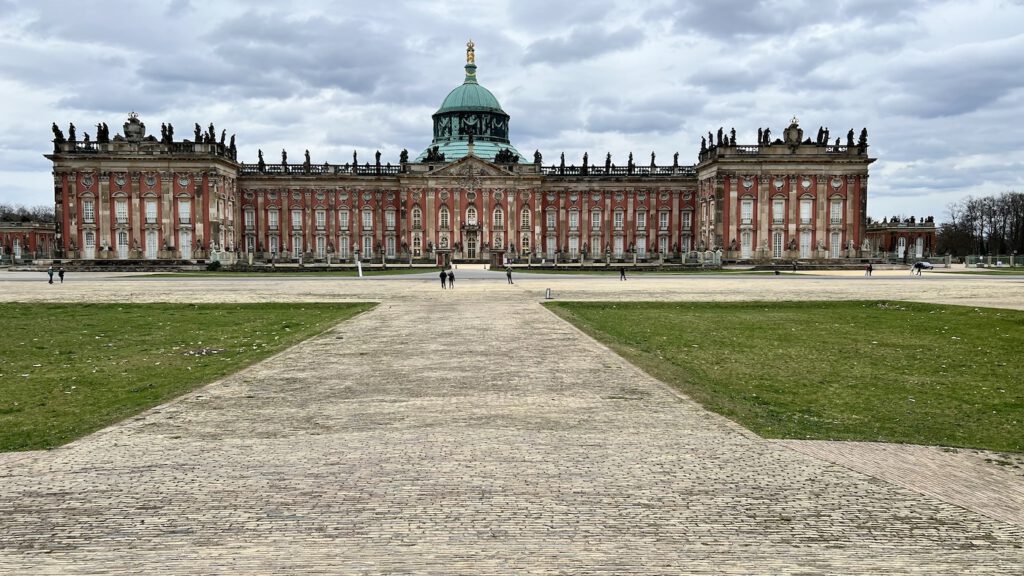
Sellin on Rügen
Rügen is located off the Baltic Sea coast of Western Pomerania and is part of the Vorpommern-Rügen district in the state of Mecklenburg-Western Pomerania. With 926 km² it is the largest German island – and if you’re not at the coast, it doesn’t feel like an island.

As we were still off season, not all over night parking places were accessible. We reckoned that the more urban areas would provide a better infrastructure and decided to head for Sellin.

Sellin was mentioned first in 1295 as Zelinische beke. The name derives from the Slavic meaning zellino=green and bek=creek…green creek!
Many centuries the family of Putbus (there is also a city named after them) owned Sellin. Since 1880 Sellin started to develop into a seaside resort.
Today Sellin is famous for the Seebrücke (Pier).
The first 508 m long construction was built in 1901 and was damaged 1918 by pack ice. The bridge head burned down in 1920 and in 1924 the construction was again damaged by ice. A new platform with concert hall was built in 1925 and again in the winter of 1941/42 ice damaged the bridge. The bridge head survived, but was not well maintained and was demolition in 1978.
What we see today was build between 1992 and 1998.

Inside the bridge head resides a restaurant in the design of art nouveau.

Behind the restaurant the pier continues. At the end is a diving gondola which dives up to 4 m. It was put into operation 2008.


Diving gondola at the end of the pier in Sellin.
Diameter inside: 7,1 m
Weight: 45 tons
Diving depth : 4 m
(can dive up to 10m)
Gondolas are also in Grömitz, Zings and Zinnowitz

Prora
The name Prora derives from a wooded hill range behind the buildings.
Prora today is, in majority, apartments and hotels and looks like any other large building complex. But the design is not new. On the contrary the model of Prora was awarded the Grand Prix at the 1937 world exhibition.
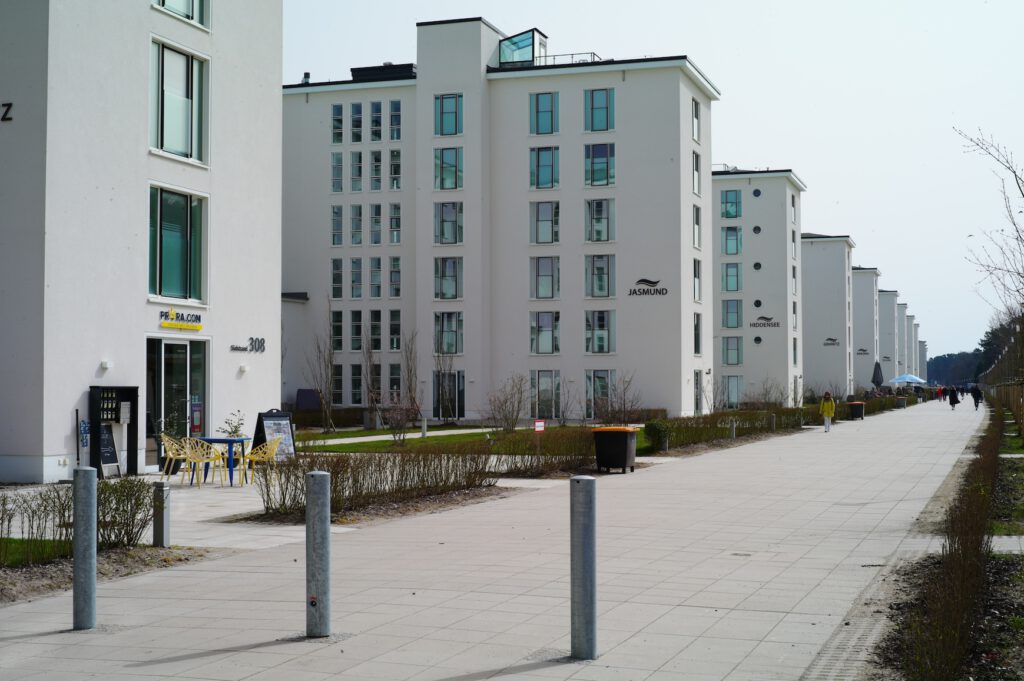
The story about these building started in 1939 and the ambition driven from the national socialist organisation Kraft durch Freude (KdF), an organisation under the Deutsche Arbeitsfront (DAF). Intension of these buildings was to accommodate up to 20.000 people for vacation. Until 1939 a 4,5 km shell construction work was completed. With the break of war the construction work was stopped. The so-called Koloss von Rügen (Colossus from Rügen) was initally made of 8 blocks. Between 1945 and 1949 three blocks were demolished. Left until today are 5 blocks with an overall length of 2,5 km.
Over time the building served various means ranging from Union offices, Police, Military, Disco, Youth Hostel.
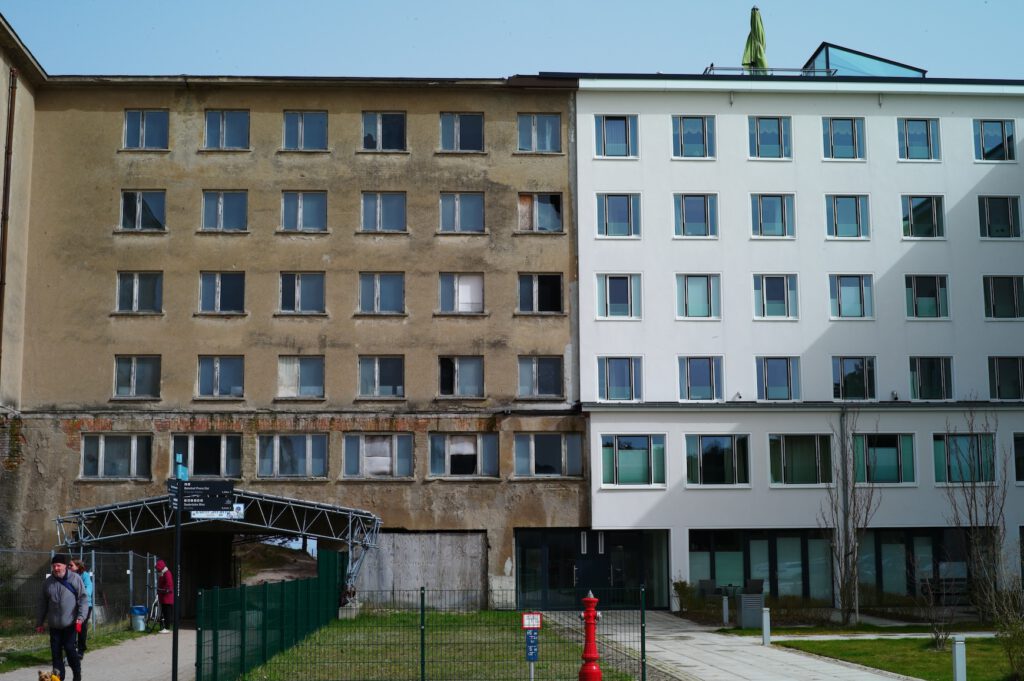




Binz
Binz or “Byntze” was first mentioned 1318. Today Binz has a population of 5.550 and is like many other cities in the north-east of Rügen a seaside resort.
We visited when Binz prepared for Easter Fire.
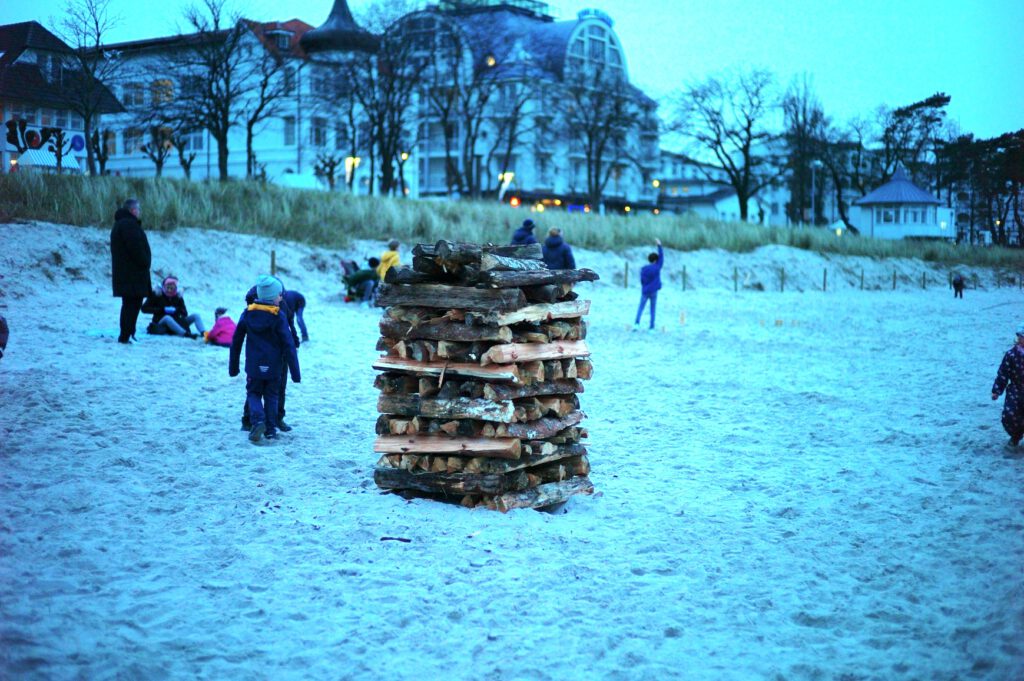


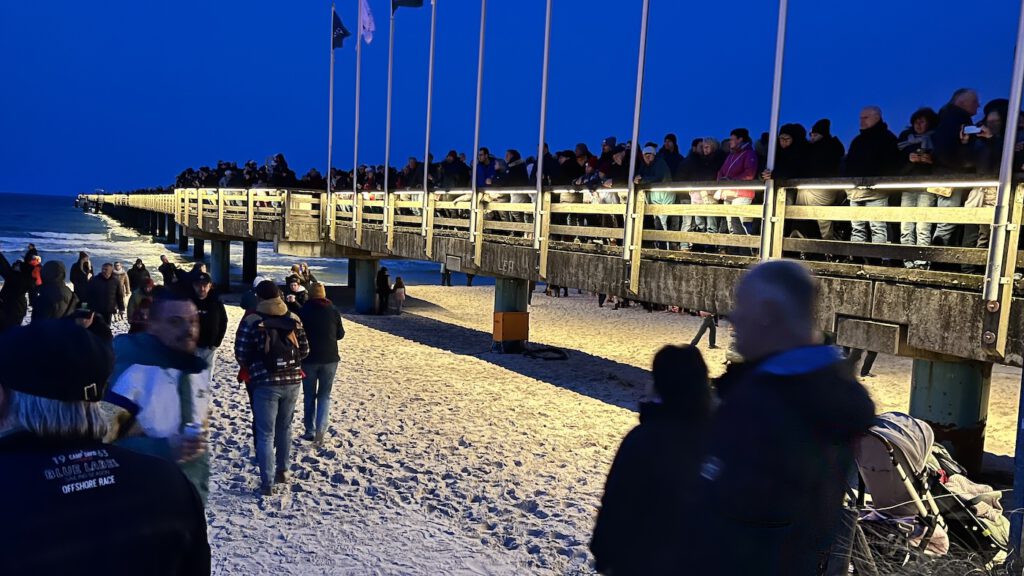
Sassnitz
Until 1993 Sassnitz was Saßnitz! Only information I was able to find is that the renaming was done to align the spelling to the certificate of appointment to a city in 1956. Not sure if that was the real reason.
In Sassnitz is one of four Wladimir Iljitsch Lenin memorial in Mecklenburg Western Pomerania. On the ninth of April, 1917 a train with exit Russians left Zürich, Switzerland and terminated in Sassnitz. W.I. Lenin was one of the passengers. He then took the ferry to Sweden and continued to Russia and the rest is well known – on October 25, 1917 the October revolution started under the lead from W.I. Lenin.

Close to the city of Sassnitz are the White Cliffs (Kreidefelsen). Chalk is based on Corals and other creatures from the sea that lived in the tropical sea about 136 million years ago. Since then the tropical sea has gone and due to the continental drift, this chalk can be found today in Denmark on the islands of Møn and Langeland at the coast of Rügen and of course in Dover. No pretty pics, because we didn’t make it, due to bad weather.

Sassnitz even closer to the port of Mukran which was build 1984 and is piloting since November 2023 a Liquified Natural Gas (LNG) terminal. There has been a discussion – and the discussion is still ongoing – if LNG is required, if Mukran is the right place, considering the tourist dominated area.

The harbour from Sassnitz is one of the must see locations. Nice restaurants, nice shops, british submarines and a nice pier.



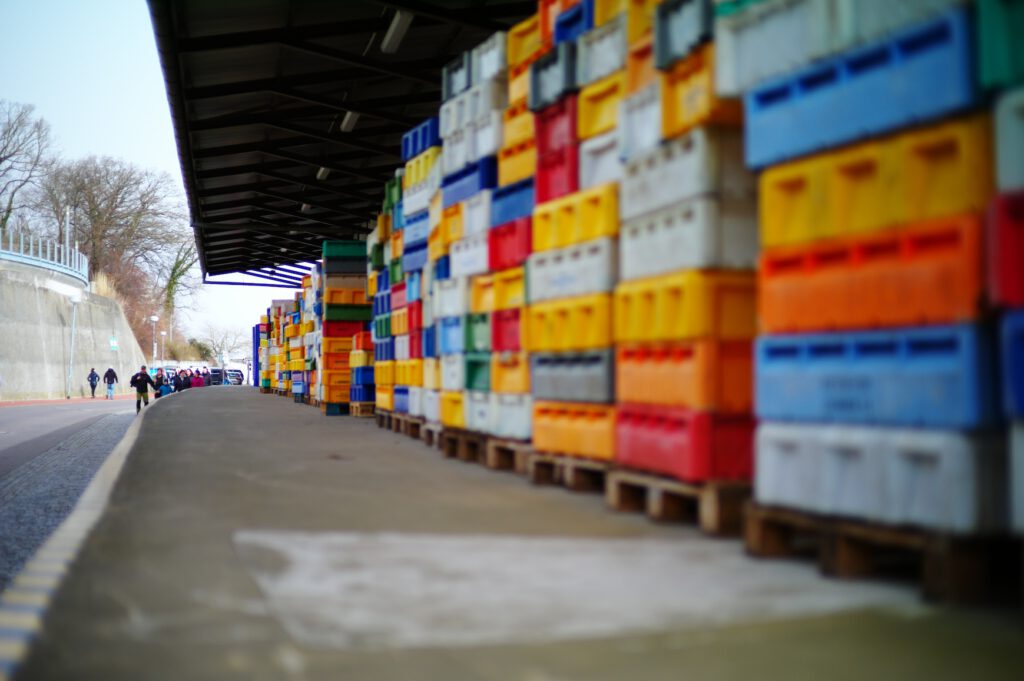



Putbus
Putbus was first mentioned 1286. The Putbus we see today was founded in 1810 Wilhelm Malte I., Prince of Putbus had the city build in a classicist style. Today Putbus has a population of 4.500.
In Putbus there are more than eighty building monuments listed. Fifteen of them are build around a big rondelle (roundabout) at “The Circus”. The architecture of the roselle is according to the model of Bath, U.K.. The roundabout has a diameter of approx. 200m and in the middle stands an obelisk with the inscription “Was des Volkes Hand Schaffer, ist des Volkes Eigen” translating into What the people built, belong to the people.







The castle which was built from 1827 until 1832, also in the classicist style, had multiple uses over time ranging from the seat of the prince over school of art and acting school. In 1955 it was tried to renovate the castle. Based on financial and ideological reason, in 1957 it was decided to demolished the castle. This happened in 1962. Today only the foundation walls are left.
Lauterbach
Founded in 1816, Lauterbach is the oldest sea side resort on Rügen. It is a suburb of Putbus, with a population of 500 and has two train stations Lauterbach (Rügen) and Lauterbach Mole. As there two different train types, the connection between and Lauterbach has three rails per track.

On the path from the train station to the sea resort Goor a monument of Caspar David Friedrich (German Romantic landscape painter) was established in March 2024. He visited several times Rügen and also did painting of the chalk cliffs.

In 1817-1818 the sea resort Goor (named after the near forest) was built in classicist style.

From here is a good view to the marina and the island Vlim.
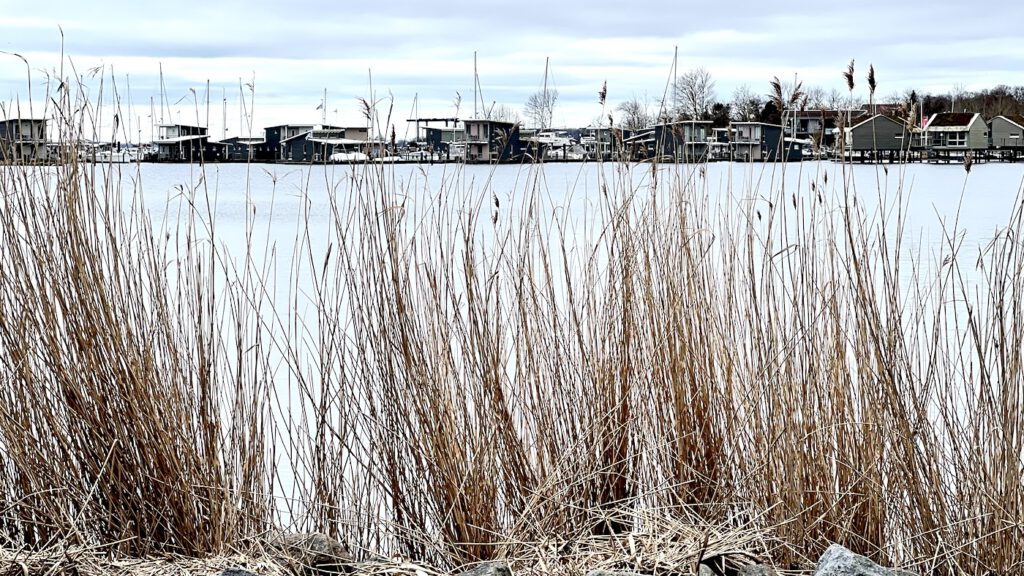
During summer the dry docks are camper spaces. In the winter they are filled with boats.

Some boats are also in for a touch of paint maintenance.

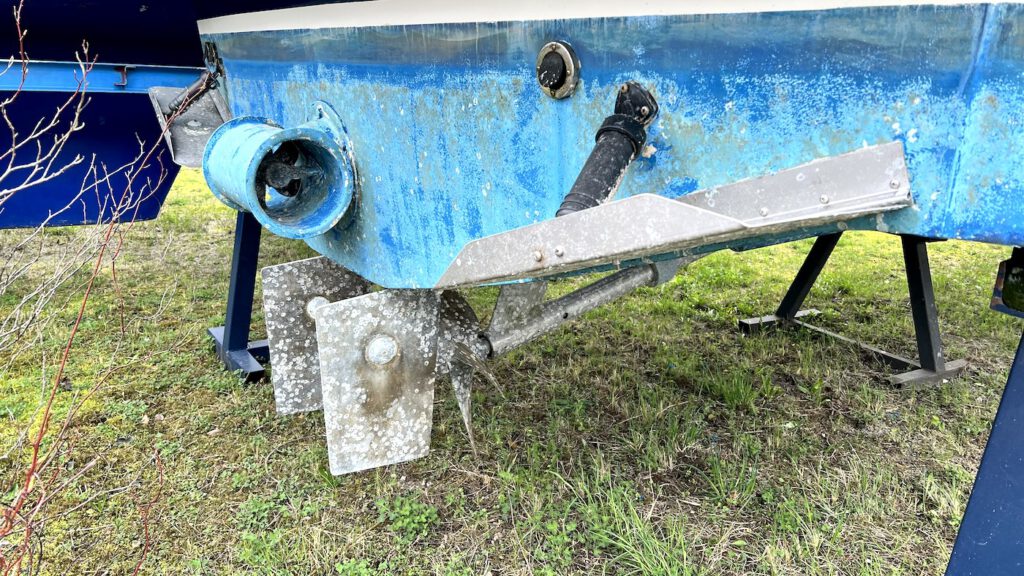

Güstrow
The Castle
The castle (Schloss) of Güstrow was built on castle (Burg) which dates back to 1307. The Thirty Years’ War, and the one and other fire destroyed parts of the castle. The castle we see today was completed 1671 in the renaissance style.
In the 16the and 17th century its was, besides Schwerin, the main residence from the Dukes of Mecklenburg. In contrary to Schwerin, which was modified in the 19th century, the castle of Güstrow is majorly in its original state. And currently being renovated.



Buildings
The old part of Güstrow is beautifully restored.



Wallensteins Hofgericht
or Lühesche Palais from 1583.
In 1629 it was judicial office from the Duke Albrecht from Wallenstein.
Later in 1839 until 1909 it was a school.
Until 1923 it was an Art museum.
Between 1923 and 1991 it was again a school.
Since 2001 it is an art gallery.
Changes
Güstrow shows how they have invested in renovation and making the city very attractive. Here just a few examples.




Doors…doors…doors
These beautiful and individual doors can be found all over the old part of town. They have survived the years and add significantly to the historical atmosphere.









Art in the city


Schwerin
Schwerin is the capital of the state Mecklenburg Western Pomerania and with a population of 98.600 it is the smallest state capital in Germany. As Wendenburg it was first mention in 1018 . In 1164 Heinrich der Löwe (also known through his vacation 1077 to Canossa visiting his friend Pope Gregor VII) granted Schwerin the city rights. The must see is certainly the castle from Schwerin which was build on a little island on the west side of the Schweriner Innensee. Until 1918 it was the residence of the Dukes of Mecklenburg. Since 1921 it is a museum as well as since 1990 is the seat of the state parliament.
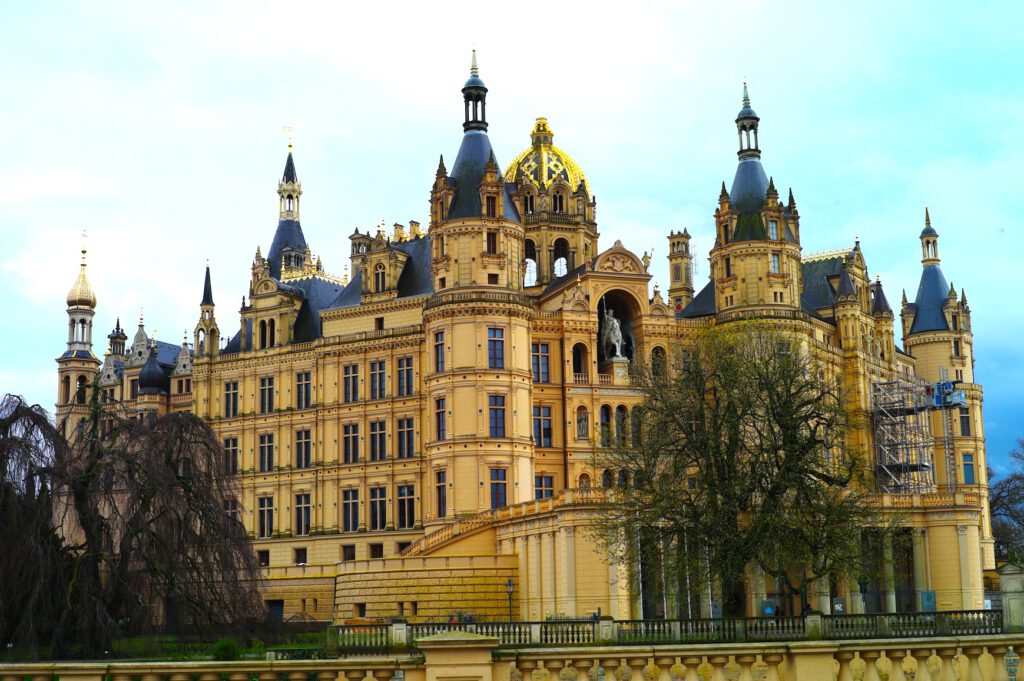



On the east side of the castle lies the castle garden and orangeries.

On the upper part of castle garden there are three bronze sculptures. All were rebuild, but still very impressive.
– David and Goliath from the Bible (1 Samual 17, 1-51)
– Heracles and the cretan bull (Greek mythology and father of Minotauros)
– Shepherd attacked by panther (possibly analogy to the males in Bible being shepherds)


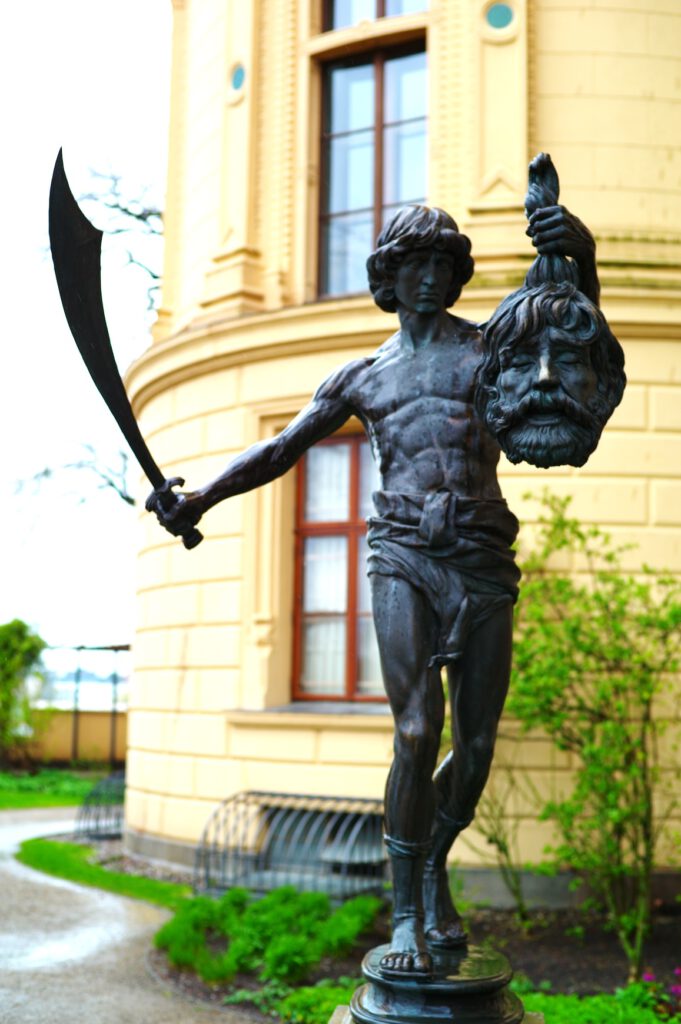

Missing since 1945.
On the south side The castle garden starts directly after crossing the swing bridge.

After approx. hundred meters stands the monument of Friedrich Franz II who was born 1823 in Ludwigslust (next station) and passed away 1883 in Schwerin. He was the Great Duke of Mecklenburg between 1842 and 1183.


One of the four pedestal figures (strength, justice, wisdom and believe)
Close to the castle and on the “main” land are the opera, museum and the marstable – to only mention a few.

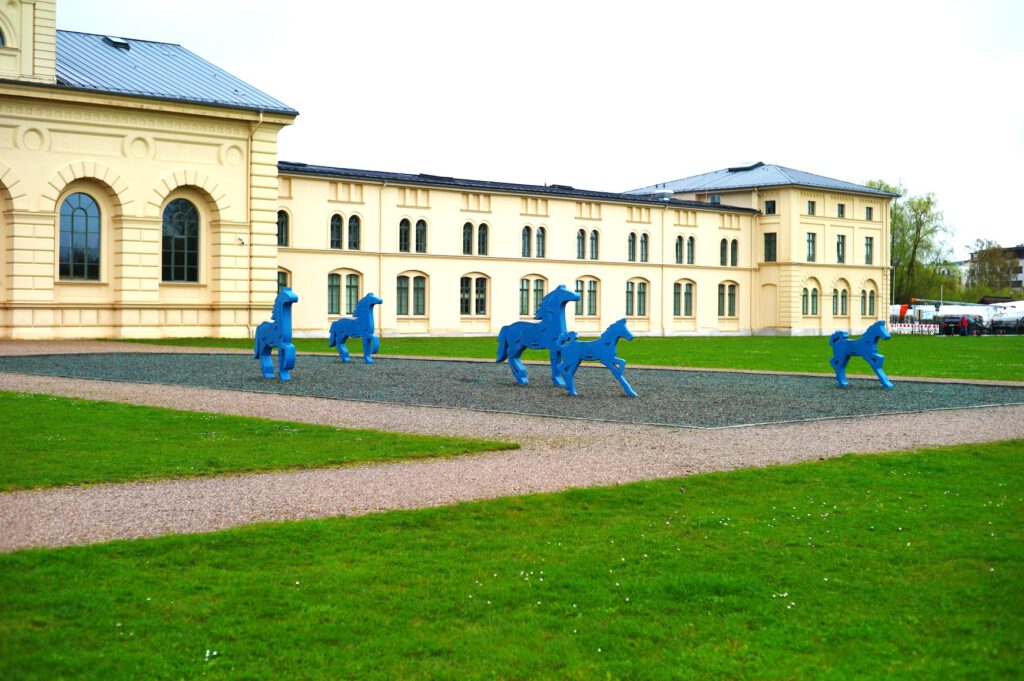

Ludwigslust
Forty-five kilometres south of Schwerin lies Ludwigslust. The city and the castle share the same name. The city derived from an estate called Klenow, which was first mentioned 1333 and located where the castle is today. Over time the city had a variety of names like Clonow, Clenowe, Kline, Cleynow, Klenow, Kleynow, Kleyow, Kleinow and Kleinow until 1754 Christian Ludwig gave the instruction to name the city by it’s todays name Ludwigslust.
The baroque castle was built between 1772 and 1776 and was the residence from the Dukes of Mecklenburg.
Today Ludwigslust has a population 12.300.

In front of the castle is a water play called Kaskade. It was originally built in 1760 using wooden elements. In 1780 it was rebuilt using granite.
In figures in the middle represent the gods of the rivers Stör and Rögnitz.
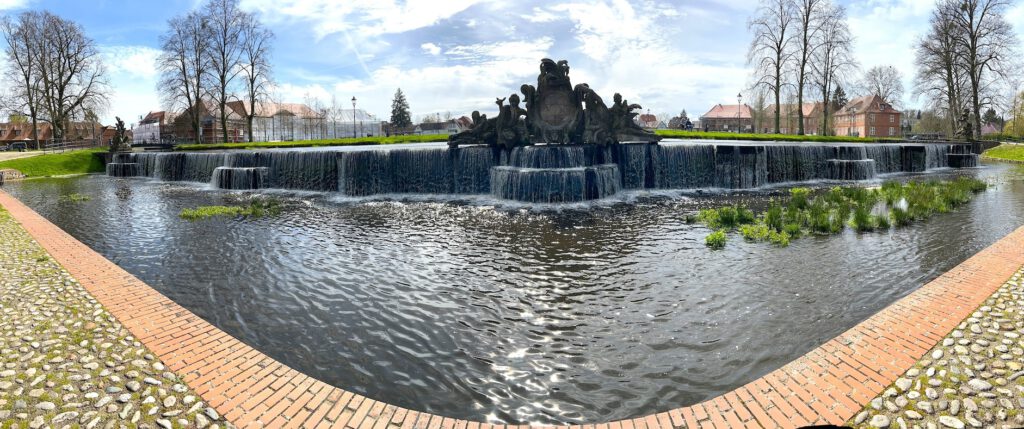
Five hundred meters away and in direct axis from the castle and cascade is the protestant church of Ludwigslust, build 1765 to 1770.

Magdeburg
Magdeburg is the state capital from Saxony-Anhalt with a population of 249.400. It used to be the largest city in Saxony-Anhalt, but since 1980 it was over taken from Halle an der Salle and comes in now second place.
In 805 Magdeburg was first mentioned. In 1207 the city burned down. In the late Middle Ages it was one of the largest cities in Germany…or what was considered as Germany during the Holy Roman Empire time. But it was in the centre of the reformation with and around Martin Luther. In 1631 during the Thirty Years War, Madgeburg was again destroyed and rebuilt. Last heavy hit, Magdeburg experience during Second World War.
Magdeburg is located on the Elbe river. In the 1920 construction work started to build the Mittellandkanal to connect the industries from Rhein and Ruhr in the west with the industries around Berlin. Today the canal reaches from Höstel in the west over 321km with Magdeburg.
Historical significant personalities are Otto I., the first emperor of the Holy Roman Empire (912-973) as well as Otto von Guericke, politician, lawyer, physicist and inventor (1602-1686).

A homage to Otto von Guericke demonstrating the power of vacuum.





Architecture with a metal facade.

Today municipal building (2021)

Refurbished (2013).
From the distance the facade projects the letters “W” and “O” (West, Ost?)

5 times destroyed-5 times rebuilt
1999 profanizated

Plauen
Plauen was first mentioned 1122 as “Virus Plawe”. From the 18th century onwards Plauen was well know its fabric and textile. Starting in the 1920’s Plauen was shifting to mechanical engineering products. Maybe also a reason why Plauen was heavily hit by bombs 1945. Today Plauen is a large district city in Saxony with a nice old part of town.
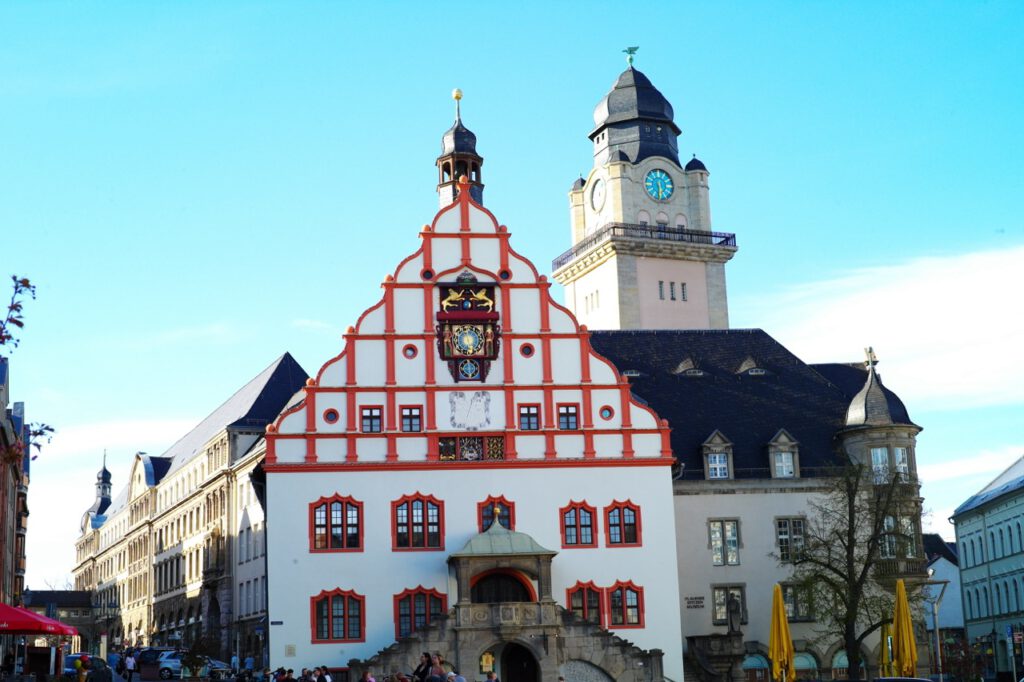
Heinrich von Plauen
The Deutsch Orden (Teutonic Order) opened in 1214 in Plauen “das Deutsche Haus” a branch. Heinrich von Plauen (1370-1429) was Hochmeister (Master) of the Teutonic Order from 1410 until 1413. After the defeat of the Teutonic Order by Polish King Jagiello 1410 in Tannenburg, Heinrich von Plauen successfully defended the Marienburg.




Archways in Plauen

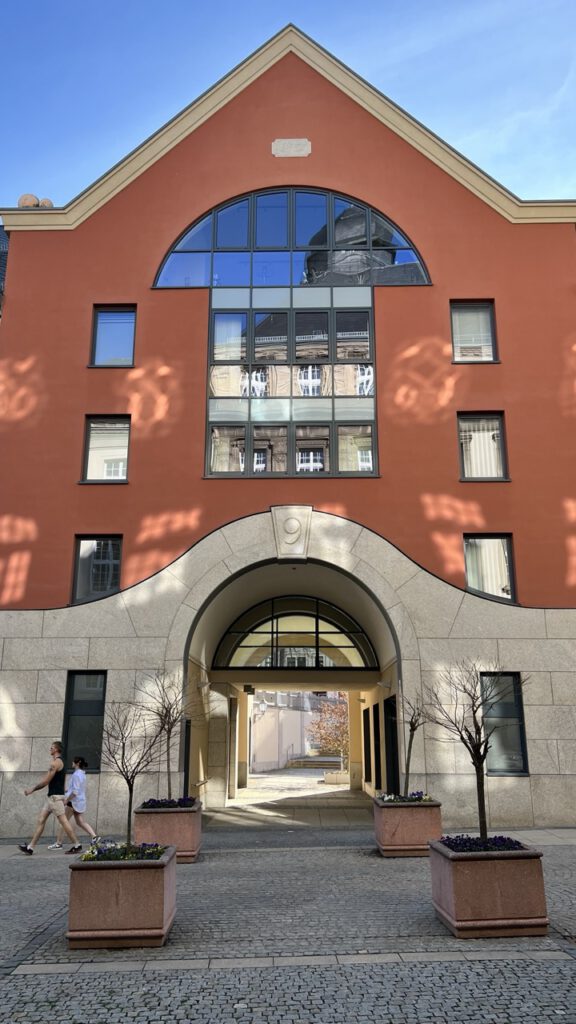


Nice restored building in the old part of town

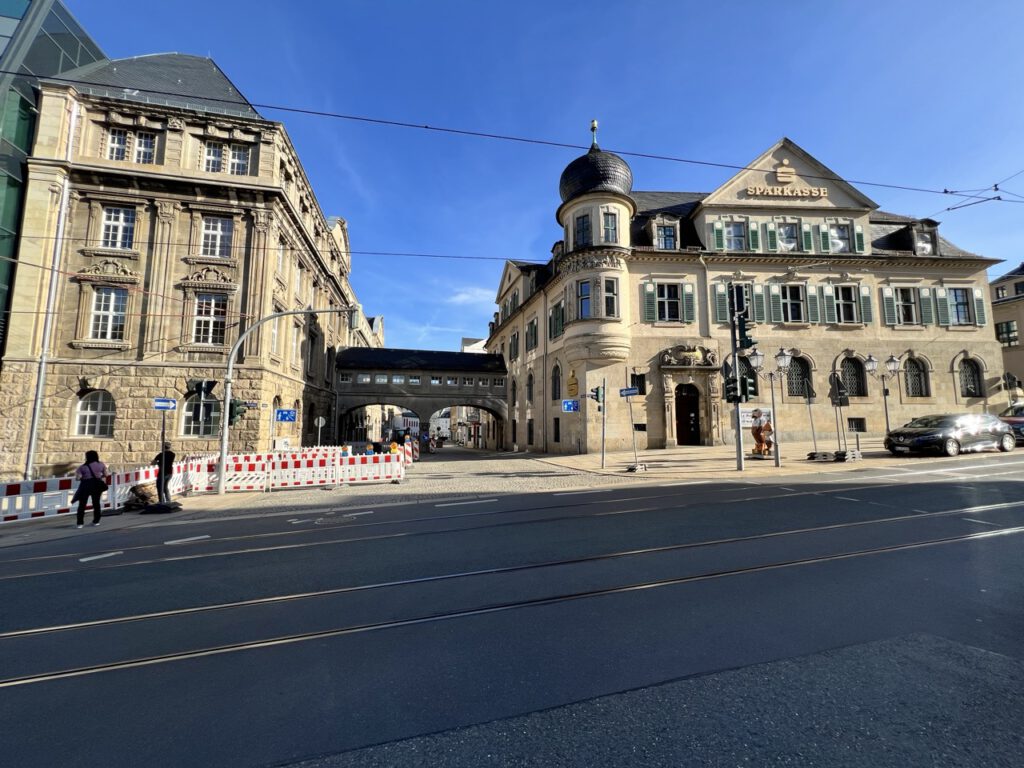

Memorial for the reunification of Germany in 1989





That’s all folks….almost.
There’s also a video available on YouTube.



